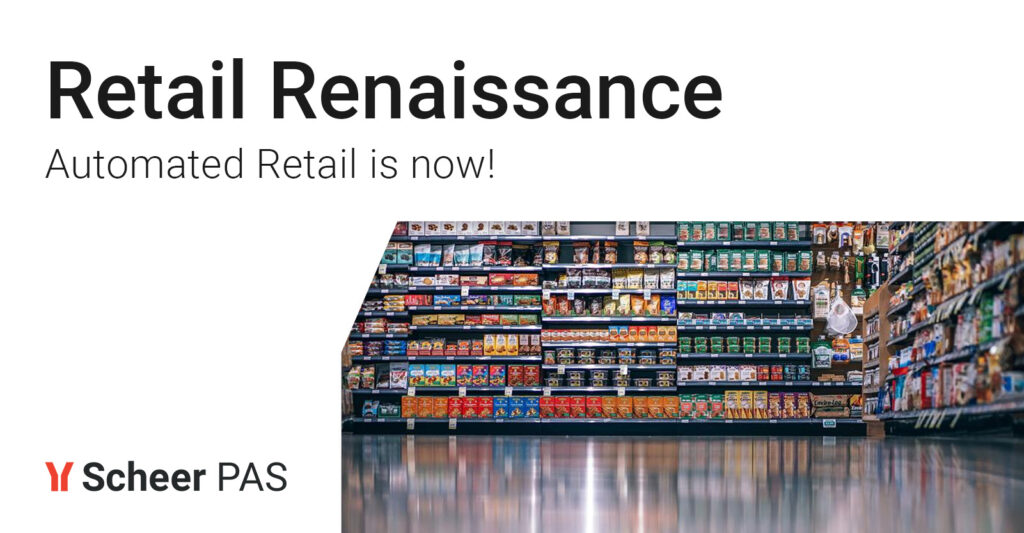From Chaos to Checkout: The Automated Retail Renaissance

With all technological advancements and the rise of AI, one would assume that keeping an eye on every important business process in retail stores would be a breeze. Sadly, such businesses require a lot of workforce alongside different IT systems to keep everything running smoothly.
Now imagine being in a managing position and receiving dozens of Excel sheets, screenshots, Word documents, emergency calls and text messages about your marketing campaigns, inventory, procurement, customer support, or any other department. In order to stay afloat, handling such stream of data and making sense of it is extremely difficult and time-consuming.
The most stressful fact is that there is a high probability, that you do not have to imagine this since you are living through these situations. Now comes a real question. Can all of this be automated and centralized without forcing all your departments to adapt to new systems and leave behind everything that you have done so far? Let us take a look at some of the things that can make your lives easier, and your business more prosperous. Ranging from (only seemingly) unimportant, to extremely difficult to handle, here are some things that you can easily automate and integrate with your existing systems.
1. Customer Support

Having well-informed and satisfied customers is a key to turning their purchases into steady growth for your own business. That does not only include handling the problems that they may have after closing business with you but also reaching out to them to get valuable feedback and keep them informed. Even though your department surely manages these requests and hands them out to you in timely manner, imagine having a real-time flow of data which can not only prevent problems in your business processes but also provide you with ideas how to improve them?
Chatbots, mailing lists, customer satisfaction machines and other tools are certainly helpful in keeping a clear vision of what is important for your customers but the different streams of data handled by different teams that are prone to errors, and the dangers of using third-party tools (especially since keeping the privacy of your customers is extremely important) paint a murky picture of how your customers perceive your brand and your services.
“Over three-quarters (76%) of customers expect companies to have an understanding of what they want and to tailor their service accordingly.”
What are customer expectations, and how have they changed? Salesforce
Turning your customer support into a one-stop shop as well as trying to do that with the entire business operation would not only improve your income and keep you well informed but would turn your own business venture into a one-stop shop for your returning customers.
2. Retail Marketing

What is the value of your brand-new deal that will help you clear out your stocks and provide an enticing product for your customers if no one has even heard about it. Advertise it on your website, send out a newsletter, invest in marketing space on the local media, delve into social media marketing and influencers, and your deals will certainly create some traction.
The campaign is done, and the agencies send you their results, your own marketing team gathers the information from different sources, and you are again left with a lot of manual work that either you, or the person that you need to hire for such things need to go through. The key question is how much traction did it create, and did you lose more than gained on clearing out your stocks?
With process automation, system integration, and customization that Low-Code allows, you can combine all the data streams in one, receive the data and transform it into useful information in real time. No matter how simple or complex is your retail business model, having immediate peak into ROI of your marketing and its success or flaws and being able to act in time to maximize its effectiveness is the new reality that your competition is surely going to take advantage of. Not only is the all-in-one marketing information available but you can design it yourself and it will cater for your retail needs.
3. Behavior Analysis

Sending customer surveys and enticing them to fill them out honestly is tiring and expensive work with barely any reliable information. Hiring trustworthy agencies to do the same thing can also prove to be unreliable and it is even more expensive. Such complicated things as customer behavior analysis can be simplified and a collateral gain from automating other essential elements of your retail business.
Automating and integrating just marketing and customer support departments should already provide sufficient data to extract valuable information and create patterns of your customers’ behavior. Just by metaphorically dipping your toes into process automation and data integration of only some of your crucial departments can automatically (no pun intended) create opportunities to use the behavior of your customers for increased gains.
”79% of retail and consumer products companies expect to be using intelligent automation for customer intelligence by 2021”
The coming ai revolution in retail and Consumer Products IBM
We’ve already passed the time for these predictions and smart use of consumer habits through automated and integrated systems is probably going to be even more important in the near future.
4. Inventory management

Whether your retail business fills its inventory just in time, or you are filling your warehouses in advance in order to save on item prices that are rapidly rising these days, inventory management is hell. Having all the data arrive in time to make more informed decisions and calculating human error which may cause catastrophic problems is somewhat of a dream come true for every upper-level manager.
Procurement, restocking, status reports and delegating workers’ tasks for increased efficiency are extremely difficult to oversee when the right information does not arrive at the right time, or to the right person. System integration and automation of inventory management does not only mean that the right information will be there on time in order to precisely but manually send out tasks in order to keep things running.
“If you aren’t already implementing automation, you are falling behind”
Begley, S. et al. (2019) Automation in retail: An executive overview for getting ready McKinsey & Company
Automation of inventory management can also mean automated replenishments, automated deliveries, information synchronization with your partners, and the right information for your customers about the availability of products increasing their trust in your ability to cater to their needs.
To summarize…
These are only some of the ways in which business process automation, system integration, and process mining can not only save you money on headache medicine but can also lead to a sustainable growth of your revenue, increased customer satisfaction and more organized business less prone to human error.
The options are limitless including automating your payroll, security, event management, employees’ reminders, store directions, contact form responses, and many more. Having everything done in one system, customized by your own needs, and further developed by your own workers without any software developers sounds like a dream come true. But in reality, it is basically only a few clicks away with a free demo.



